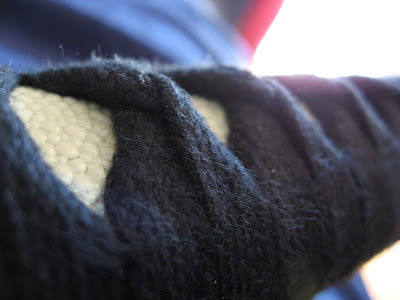
So this is what they call an aged yancha. "Quite aged," even. If it were a pu-erh, then I would still consider it to be young. This 2002 Rou Gui, however, is reaching the end of it's life. This starts to show in the lifeless aroma of the dry leaf, then even from the rather light flavor of the tea.

The tea starts off by giving aromas of subdued dark chocolate, dry grass, and bread. The flavor is much lighter than I'm used to in yancha. I had to increase from my usual short steeps, to 10-20 seconds, to get a good grip of the flavors. After that, the tea comes out with very little roast, but a dry grass flavor that seems to have replaced it. The roast is light enough in flavor to resemble something like bark. If I look for it, I can taste a bit of sour.

After being pleasantly surprised by yesterday's 07 DHP, I found this tea disappointing. I expected something as bold and sharp as that DHP, but got something much lighter, and perhaps slightly stale. The flavor drops off sharply around the 6th infusion, but the tea continues to give significantly dark-colored steeps. Interesting to note is that the tea started out light in color, then grew darker and darker through the steeps. The picture is of steep 1, and steep 6 got about 3 times as dark (brown/red). Each consecutive steep was longer, which accounted, at least partially, for the darkening.
0 comments:
Post a Comment